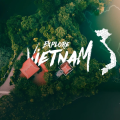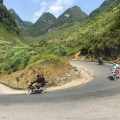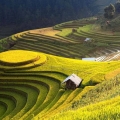Ha Giang - The Legendary Ha Giang Loop
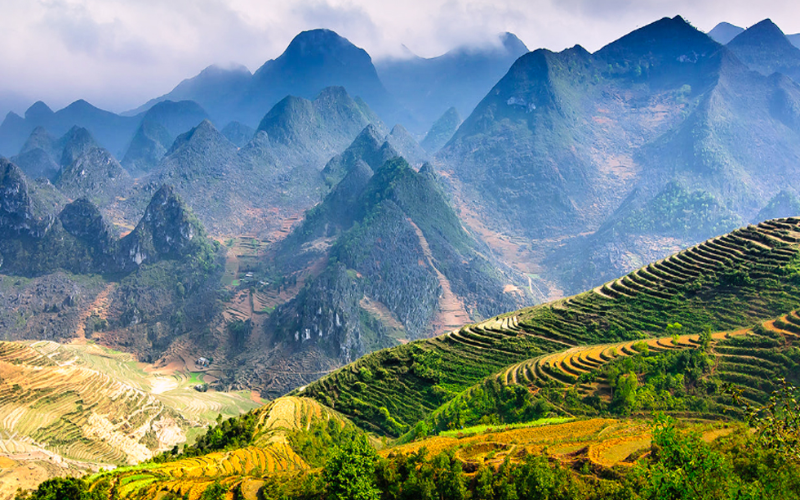
If you crave raw adventure and untamed landscapes, Ha Giang is your dream destination. Famous for the legendary Ha Giang Loop, this northernmost province offers jaw-dropping mountain passes, limestone karsts, and authentic ethnic minority villages.
Travelers often ride motorbikes (or join tours) to tackle the Ha Giang Loop, a circular route that passes through Dong Van, Meo Vac, and Ma Pi Leng Pass - one of Vietnam’s most breathtaking roads. Along the way, you’ll experience colorful local markets, traditional stilt houses, and the warm hospitality of the people.
Best time: September-November (golden rice harvest) or March (flower season). If you want authentic Vietnam and pure adventure, Ha Giang tops the list.
Ha Long Bay - Vietnam’s Iconic Seascape
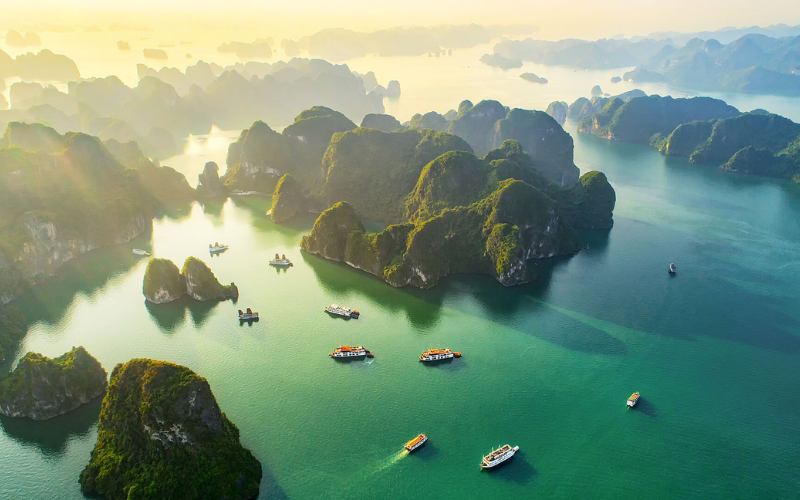
No trip to Vietnam is complete without seeing Ha Long Bay, a UNESCO World Heritage Site and one of the country’s most famous natural wonders. Picture thousands of limestone karsts rising from emerald waters - it’s truly otherworldly.
The best way to explore Ha Long Bay is on a cruise. You can kayak through hidden lagoons, visit floating fishing villages, or relax on deck as the sun sets over the bay. For fewer crowds but equally stunning views, consider Lan Ha Bay or Bai Tu Long Bay.
Tip: Many travelers combine Ha Long Bay with a visit to nearby Cat Ba Island, which offers trekking, rock climbing, and sandy beaches.
Hanoi - The Capital’s Timeless Charm
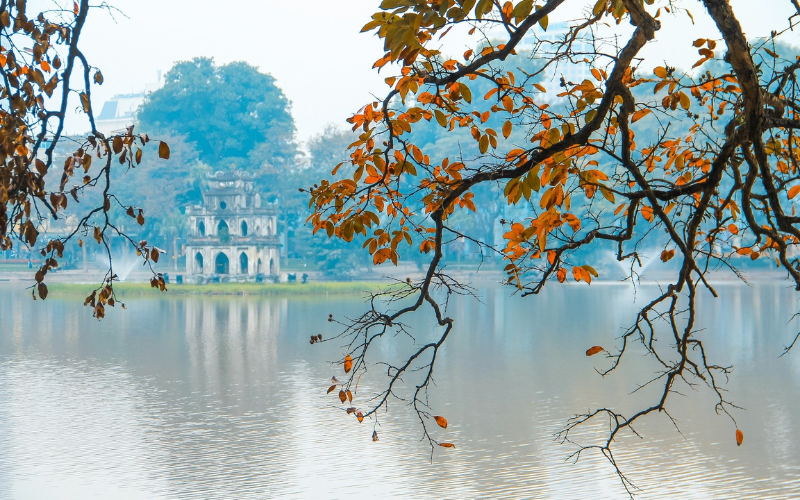
From the mountains and bays, head to Hanoi, Vietnam’s capital city. It’s a fascinating blend of tradition and modernity, where chaotic traffic and buzzing street life meet peaceful lakes and centuries-old temples.
Highlights include the Old Quarter, with its maze of narrow streets and street food stalls; Hoan Kiem Lake, perfect for a morning stroll; and the Temple of Literature, Vietnam’s first university. Don’t miss a bowl of steaming pho or bun cha, and definitely try the famous egg coffee.
Hanoi also makes a great base for exploring nearby destinations like Ninh Binh, Ha Long Bay, and Mai Chau.
Ninh Binh - The Inland Halong Bay
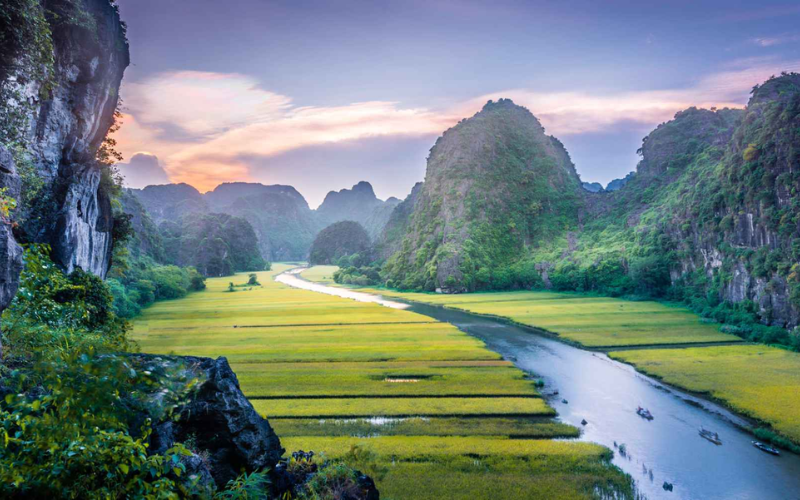 A two-hour trip south of Hanoi brings you to Ninh Binh, often called the “Inland Halong Bay.” Instead of ocean, dramatic limestone cliffs rise out of rice paddies and winding rivers.
A two-hour trip south of Hanoi brings you to Ninh Binh, often called the “Inland Halong Bay.” Instead of ocean, dramatic limestone cliffs rise out of rice paddies and winding rivers.
Take a boat ride through Trang An or Tam Coc, where local women row with their feet. For epic views, climb to the top of Mua Cave viewpoint. History lovers will enjoy visiting Hoa Lu Ancient Capital, Vietnam’s former royal seat.
With its peaceful countryside vibe, Ninh Binh is perfect if you want to escape city crowds while still experiencing breathtaking scenery.
Phong Nha - Caves and Jungle Adventures
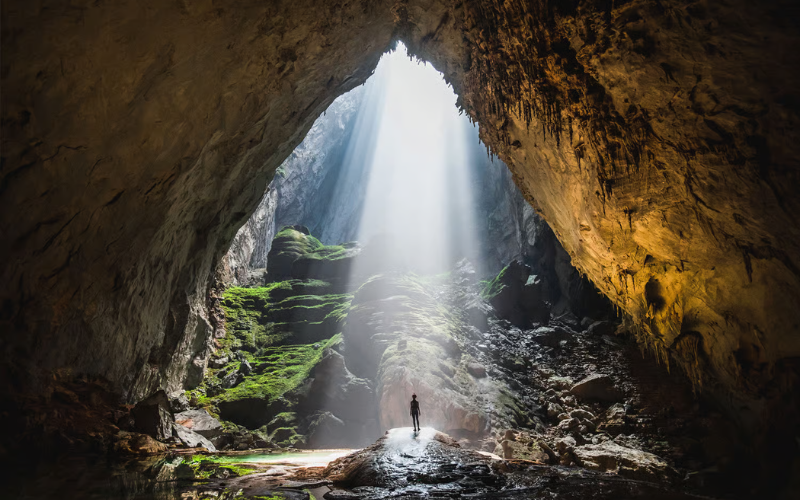
Next on the journey south is Phong Nha-Ke Bang National Park, a UNESCO World Heritage Site and home to some of the largest and most impressive caves in the world.
The most famous is Son Doong Cave, the largest cave on Earth, which requires a multi-day expedition. But you don’t need to be an extreme adventurer - there are plenty of accessible options like Paradise Cave, Phong Nha Cave, and Dark Cave (where you can zipline and swim in an underground river).
Beyond caves, Phong Nha offers jungle treks, cycling through villages, and peaceful boat rides on the Son River. It’s an outdoor lover’s paradise.
Hue - Vietnam’s Imperial Past
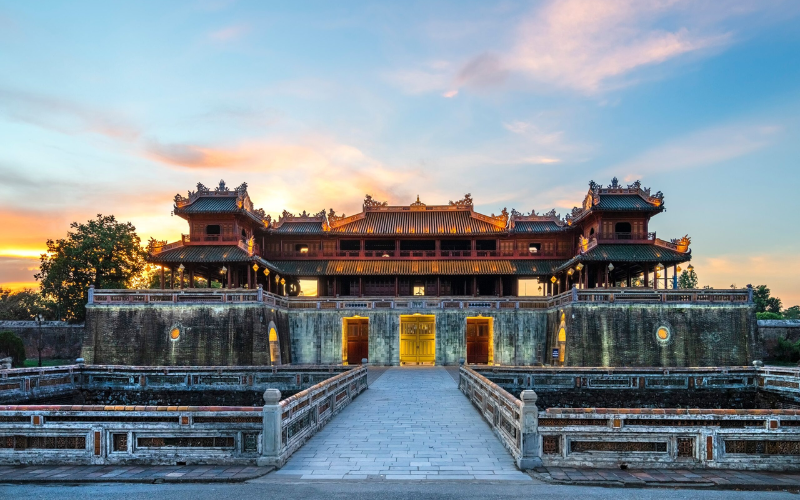
Once Vietnam’s imperial capital, Hue is steeped in history. The Imperial Citadel is the highlight - a sprawling complex of palaces, temples, and gates that once housed emperors.
Other must-sees include the Thien Mu Pagoda and the royal tombs scattered along the Perfume River. Take a dragon boat ride at sunset for a magical experience.
Foodies should also make time for Hue’s cuisine, considered among the most refined in Vietnam. Try bun bo Hue (spicy beef noodle soup) and banh beo (steamed rice cakes).
Hoi An - A Living Museum
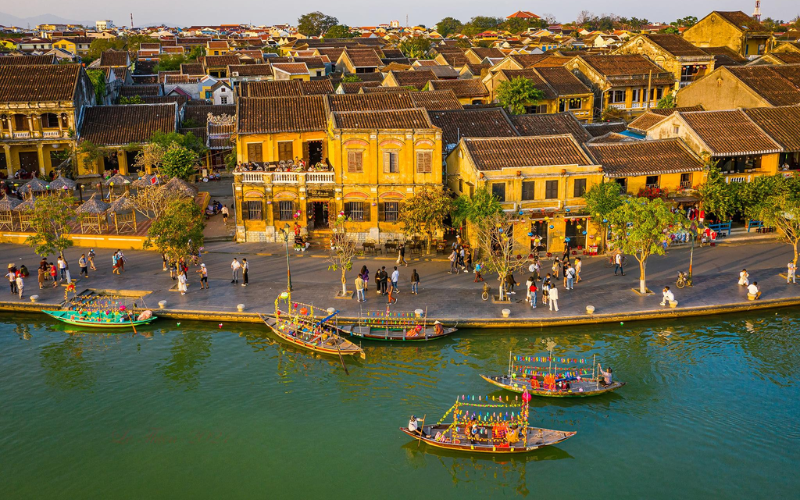
Just a few hours south of Hue, Hoi An is one of Vietnam’s most charming towns. This UNESCO World Heritage Site is known for its preserved Ancient Town, lantern-lit streets, and riverside cafes.
During the day, you can wander through old merchant houses, shop for souvenirs, or get tailor-made clothes. At night, the town glows with thousands of colorful lanterns.
Hoi An is also close to the beach (An Bang and Cua Dai) and the countryside, where you can bike through rice fields and visit small villages. It’s one of those places where travelers come for two days and end up staying a week.
Da Nang - The Coastal Playground
![]()
Right next to Hoi An is Da Nang, a modern coastal city with a relaxed vibe. Its long sandy beaches, like My Khe Beach, are perfect for swimming and surfing.
One of Da Nang’s biggest draws is the Golden Bridge, held up by giant stone hands, located in Ba Na Hills. You can also explore the Marble Mountains or enjoy the city’s buzzing nightlife and cafe scene.
Da Nang is a great place to recharge between cultural stops like Hue and Hoi An.
Nha Trang - The Beach Capital
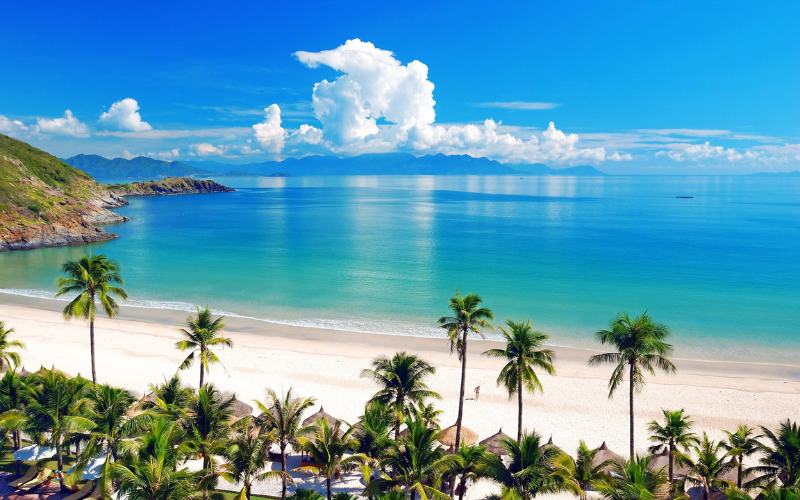
Further south, Nha Trang is Vietnam’s top beach destination. The turquoise waters, long sandy coastline, and offshore islands make it a perfect spot for sunseekers.
Water activities abound here: snorkeling, diving, island-hopping, or even mud baths. The city also has lively nightlife, with rooftop bars and seafood restaurants lining the shore.
Nearby islands like Hon Mun are famous for coral reefs, while Hon Tam offers quieter resorts.
Da Lat - The City of Eternal Spring
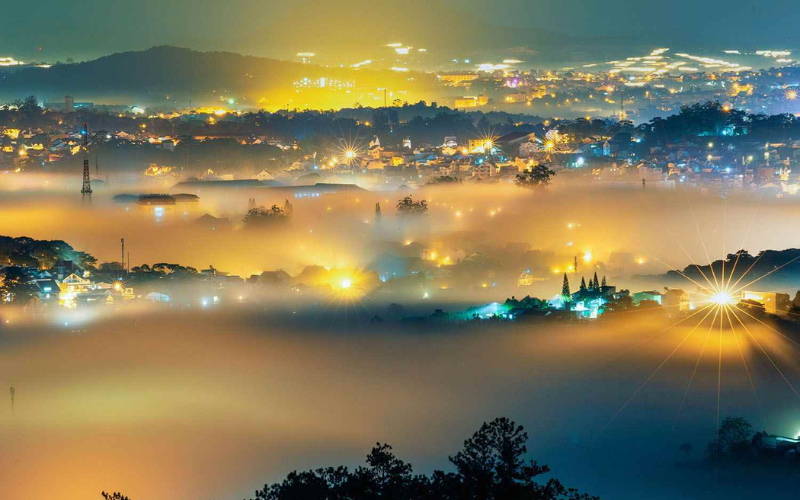
In contrast to Nha Trang’s beaches, Da Lat sits high in the Central Highlands with a cool mountain climate. Known as the “City of Eternal Spring,” it’s full of flower gardens, pine forests, and waterfalls.
Quirky attractions like the Crazy House and French colonial villas give the city a unique charm. Nature lovers can explore waterfalls like Pongour or trek through the hills. Coffee culture thrives here too - don’t miss tasting Da Lat’s locally grown beans.
Da Lat is popular with couples and honeymooners for its romantic vibe.
Ho Chi Minh City - Energy of the South
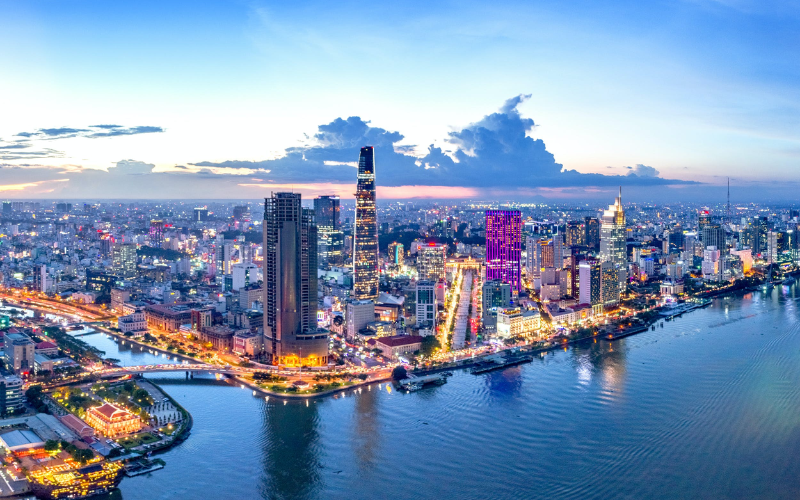
Formerly known as Saigon, Ho Chi Minh City is Vietnam’s largest and most dynamic metropolis. Skyscrapers tower over French colonial buildings, while street vendors sell steaming bowls of noodles.
Key attractions include the War Remnants Museum, Notre Dame Cathedral, and the Central Post Office. History buffs will want to take a day trip to the Cu Chi Tunnels, used during the Vietnam War.
The city is also Vietnam’s culinary capital - from street food stalls serving banh mi and pho to trendy rooftop bars overlooking the skyline.
Mekong Delta - Vietnam’s Rice Bowl
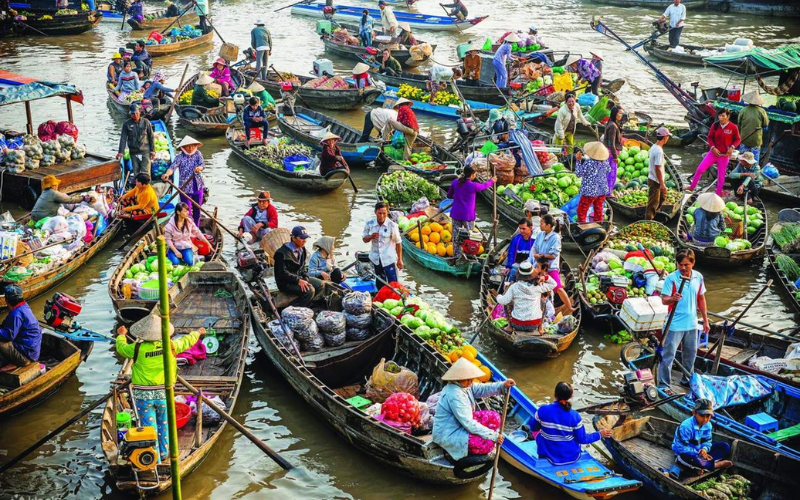 South of Ho Chi Minh City lies the Mekong Delta, a region of rivers, floating markets, and lush green landscapes. Life here revolves around the waterways.
South of Ho Chi Minh City lies the Mekong Delta, a region of rivers, floating markets, and lush green landscapes. Life here revolves around the waterways.
Take a boat trip to explore canals lined with coconut palms, visit floating markets like Cai Rang, and stop by villages where locals make rice paper and coconut candy. The Mekong is also famous for tropical fruits - dragon fruit, rambutan, and durian grow abundantly here.
Phu Quoc Island - Paradise in the South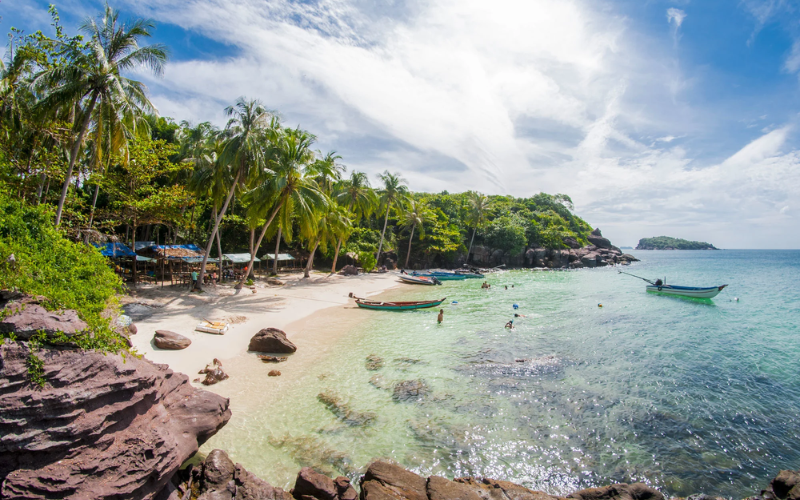
End your Vietnam journey in style on Phu Quoc Island, a tropical pardise off the southern coast. Known for its white-sand beaches, turquoise waters, and luxury resorts, it’s the ultimate place to relax after exploring the country.
Long Beach is the most popular, but you’ll also find hidden gems like Sao Beach and Ong Lang Beach. Beyond beaches, Phu Quoc has waterfalls, night markets, and even a cable car with incredible ocean views. It’s no wonder Phu Quoc is quickly becoming one of Southeast Asia’s hottest island destinations.
Final Thoughts
From the towering mountains of Ha Giang to the golden beaches of Phu Quoc, Vietnam offers a journey that’s as diverse as it is unforgettable. Each stop tells a different story - one of nature, culture, food, or history - but together, they weave the colorful tapestry that makes Vietnam one of the most rewarding countries to explore.
If you only have time for a few highlights, don’t miss Ha Long Bay for its world-famous scenery, Hoi An for timeless charm, and the Ha Giang Loop for an adventure of a lifetime. But if you can, travel the full length of the country - it’s a trip you’ll never forget.



